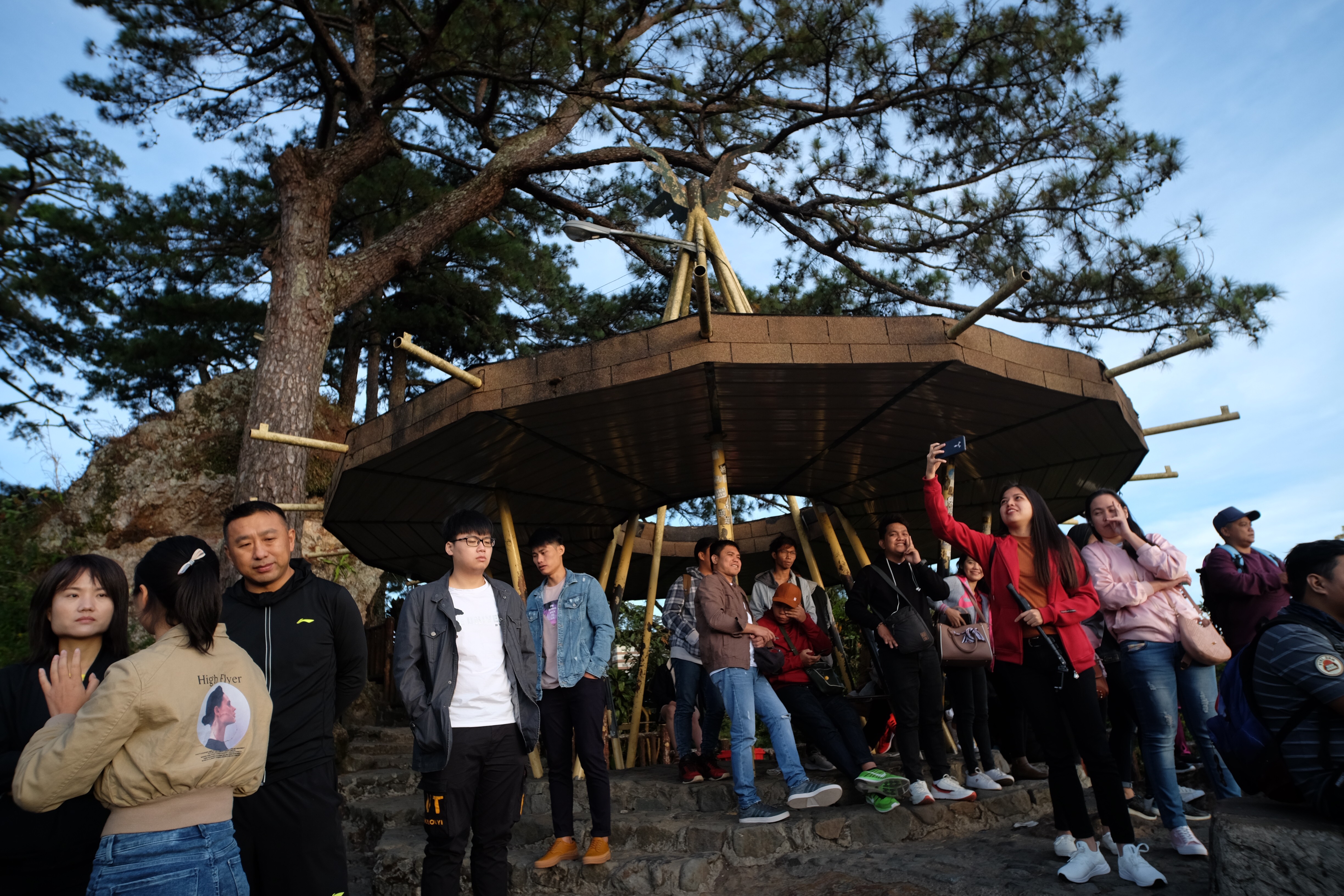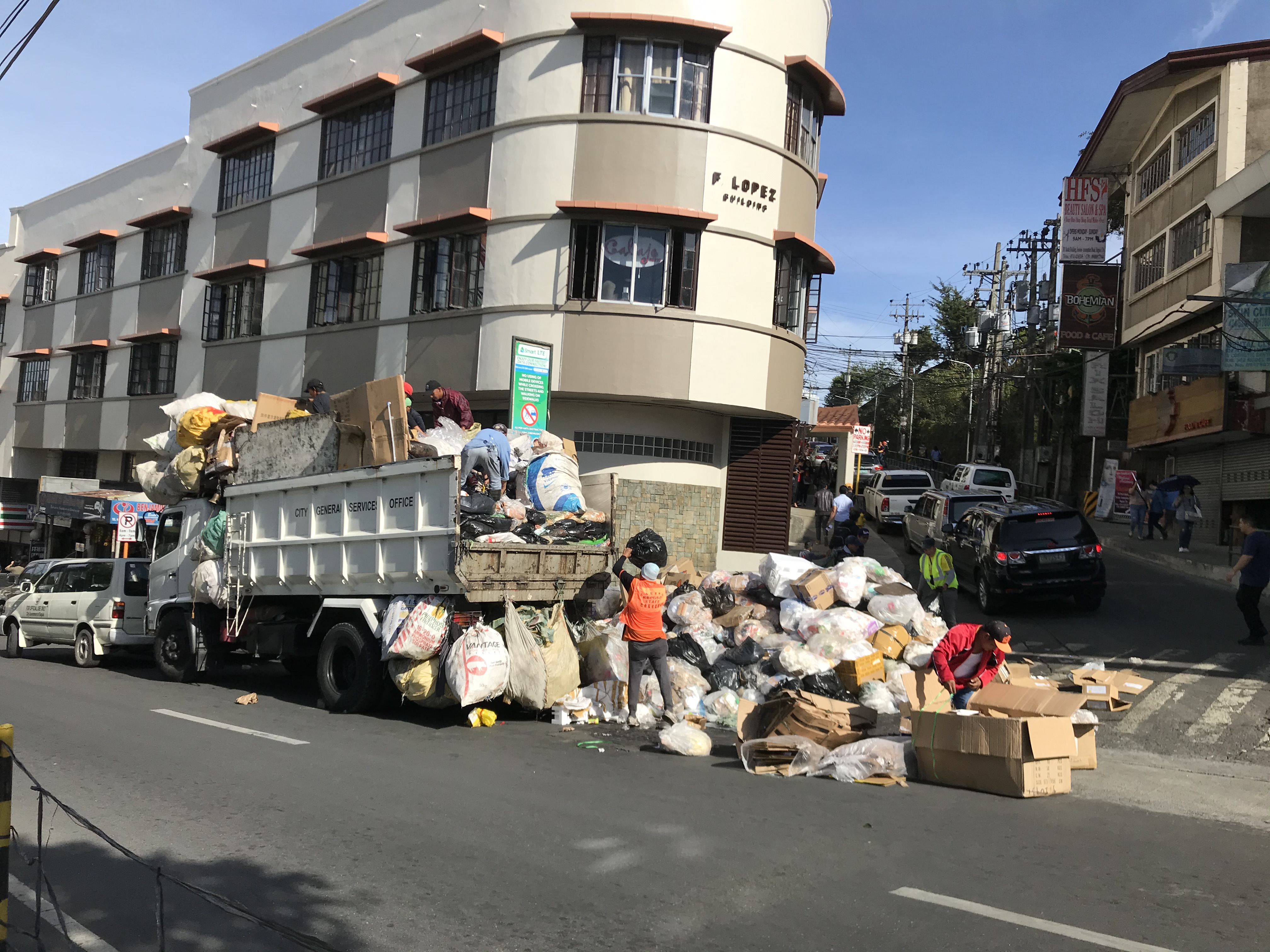Expansion woes hurting tourist spots, says DOT

MINES VIEW SUNRISE Local and foreign tourists pick their spots at the view deck of Mines View Park in Baguio City to watch the sun rise on Christmas Day. Mines View, which gives visitors a vantage point of the Cordillera mountains and the old mining areas of Benguet province, is among the most popular destinations in the summer capital. —NIÑO JESUS ORBETA
BAGUIO CITY—Towns that are frequented by tourists must determine their carrying capacities to address traffic jams and overcrowding at any given time, Tourism Undersecretary Arturo Boncato said here. Speaking at a tourism forum here recently, Boncato cited as an example the tourist town of Sagada in Mountain Province, which had been suffering from traffic gridlocks along narrow municipal roads leading to its popular caves.
Boncato said “overtourism” was affecting Sagada and many other towns that host popular tourism destinations. He said local officials should measure how many people could be served by their infrastructures and natural resources.Estimating the carrying capacity of cities or towns would take time and money but local governments could do “pocket carrying capacity studies” to determine the impact of people on tourist spots.
Such studies would tell officials, for instance, how many should Burnham Park or Mines View Park, both popular tourist destinations here, accommodate at any given time, Boncato told the forum attended by local officials, hotel operators and travel agencies.
“If a destination or attraction is packed, we bring tourists to another spot in the town,” he said.

TRASH HAUL Personnel of Baguio City’s waste management office haul trash that starts piling up at a collection point on Session Road on Friday. The volume of garbage in the city grows due to the influx of visitors. —VINCENT CABREZA
Traffic woes
Just like Sagada, Baguio suffers traffic jams now that its peak tourism season has started with the Christmas holidays.
Article continues after this advertisementThis city has a road system that serves 145,416 people or half of its 350,000 population, according to a Baguio urban carrying capacity report prepared for the National Economic and Development Authority.The report said the daytime population had ballooned to over 700,000 people because of transient workers and seasonal tourists, putting more stress on these roads as well as parks and remaining forestland.
Article continues after this advertisementCity officials have implemented rerouting schemes to ease traffic jams in tourist haunts like Lourdes Grotto and Mines View Park. But these have apparently failed, with thousands of tourists and commuters opting to walk rather than wait for hours for jeepneys and taxis that have become scarce.
From Dec. 21 to Dec. 26, more than 70,000 vehicles used the three major routes to Baguio (Kennon Road, Marcos Highway and Naguilian Road), according to the Department of Public Works and Highways.
Benchmark
Boracay is the government’s benchmark for sustainable tourism after it learned how many people it can accommodate when the popular island destination in Aklan province was shut down for six months last year to undergo massive rehabilitation, Boncato said.Assisted by the University of the Philippines Los Baños, government agencies like the Department of Tourism (DOT) and the Department of Environment and Natural Resources have regulated the number of tourists on the island, particularly its white beaches.
It is estimated that Boracay can serve up to 19,250 people, Boncato said. The island has 35,000 residents, based on the 2015 census.
According to Boncato, the estimate brought attention to the island’s 70,000 transient workers who were employed by resorts and hotels.
“The current direction is to build accommodations for workers outside Boracay. So they come in the morning and leave in the evening,” he said.
Boracay reopened on Oct. 26, 2018, and had since been serving 5,600 guests a day, DOT reports said.
El Nido, Coron
Several destinations like the towns of El Nido and Coron in Palawan province are undertaking their own carrying capacity studies, Boncato said.
El Nido imposes restrictions over the number of boats visiting its scenic spots.
Boncato said the pocket carrying capacity studies would also help the DOT finance the repairs or the modernization of drains and sewers to make these destinations handle more tourists.
The DOT has tapped the World Bank to finance the drain and sewage upgrade of Siargao Island in Surigao del Norte province and Siquijor Island, Boncato said.
He said loans from the Asian Development Bank would be used to rehabilitate Coron and El Nido, which are undergoing a household inventory to enable the local government to replace “bottomless sewage tanks.”